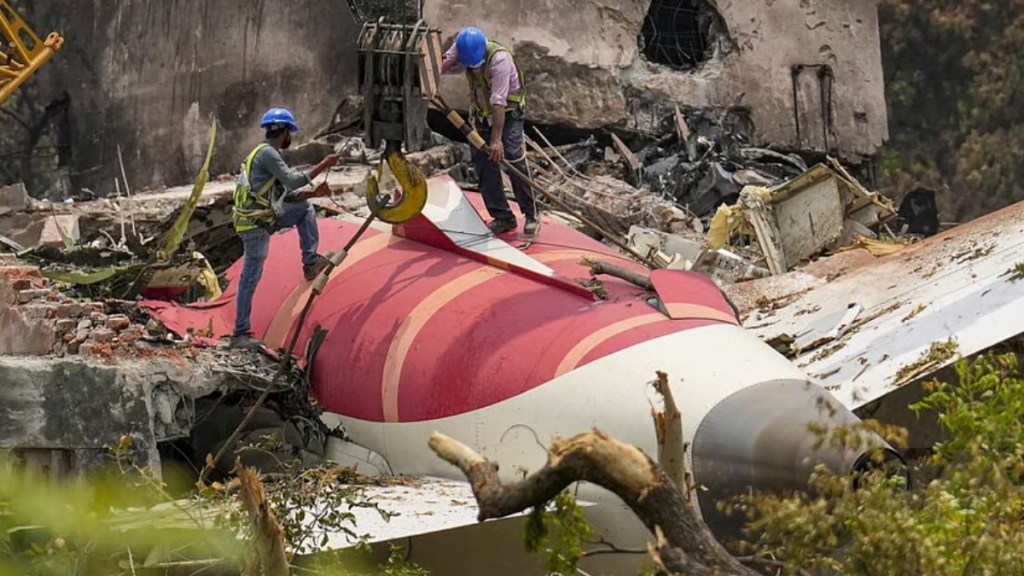While the preliminary findings of the investigation into the June 12 Air India crash, submitted by the Aircraft Accident Investigation Bureau (AAIB), reveal a sudden loss of power in the aircraft, the exact cause of the abrupt stoppage of fuel supply to both engines remains unclear.
The report states that both engines shut down just seconds after takeoff, following the transition of the fuel cutoff switches from the ‘Run’ to ‘Cutoff’ position—one after the other.
According to the cockpit voice recorder, one pilot was heard asking the other, “Why did he cut off?” To which the other pilot responded that he had not done so.
A few seconds later, the fuel switch for one engine was returned to the ‘Run’ position. Both engines subsequently relighted but failed to accelerate or recover core speed, the report noted.
“It is certain that both engines had shut down; it may have happened because of the fuel control switches being selected off. How did they go off? A technical defect, or human intervention? The design is such that it cannot automatically go on and off,” said veteran pilot and aviation safety expert Amit Singh to PTI.
Mark Martin, CEO of Martin Consulting, emphasised that the report’s revelation—that both engine fuel switches moved to ‘Cutoff’ during takeoff—is highly unusual and demands global attention from all Boeing 787 operators.
He stressed that no competent pilot would deliberately interact with fuel switches during such a critical phase of flight, where attention is focused on instruments directly ahead, such as landing gear and flap controls—not the mid-console where the fuel switches are located.
The AAIB report also references a Special Airworthiness Information Bulletin issued by the US Federal Aviation Administration in December 2018, highlighting the potential disengagement of the locking feature on the fuel control switches. This mention has raised further concerns among experts.
Speaking to FE, UK-based international aviation lawyer James Healy-Pratt said, “The specific inclusion of a Special Airworthiness Information Bulletin from December 2018 that highlights defective fuel control switches is of real significance. Both Air India and Boeing have serious questions to answer arising out of this preliminary report.”
“Our group of families will be taking action against Boeing in the US courts very soon to obtain both evidence and answers about the role of the fuel control switches in this tragedy. Our group of families is also pursuing Air India in the High Court in London, England,” Healy-Pratt added.
The investigation is ongoing. The AAIB report states that the investigation team will continue to review and examine additional evidence, records, and information being sought from relevant stakeholders.

